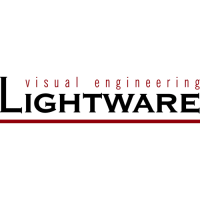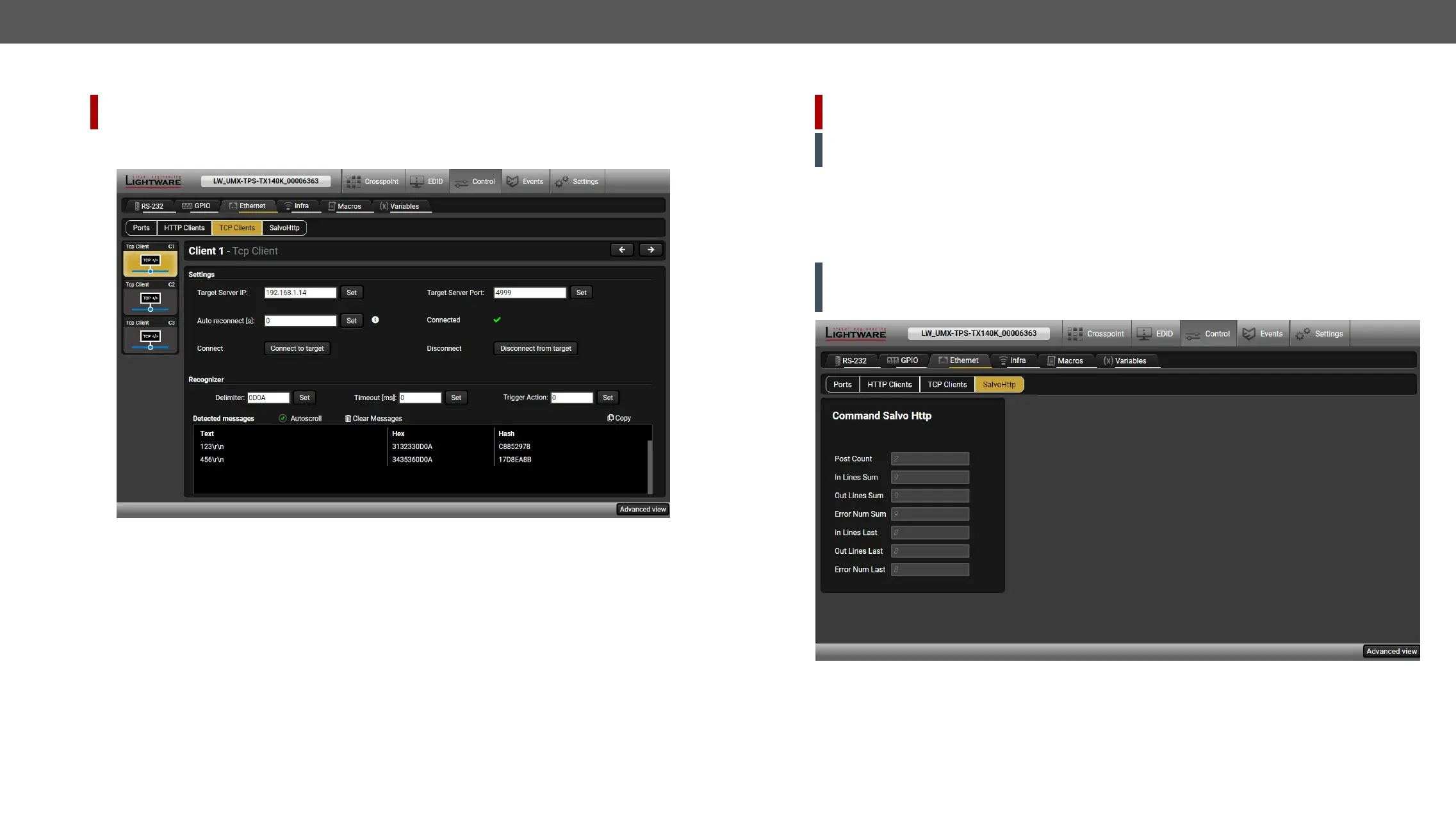TCP Clients (TCP Message Recognizer)
DIFFERENCE:
package v1.5.0b4.
This tab is the preparing and monitoring interface for the TCP recognizer which may trigger Event Manager
Actions. A simple example can be seen in the TCP Message Recognizer section.
TCP Clients tab in the Control/Ethernet menu
The target device has to be set as a TCP client (three clients can be set):
Step 1. Type and set the Target IP address.
Step 2. Type and set the TCP port number.
Step 3. Make sure the same TCP port is opened and Enabled in the target device.
Step 4. Press the Connect to target button.
Step 5. Make the target device send a message and check it in the Detected messages list.
▪ Auto reconnect: Numeric value; sets the time (seconds) between the automatic reconnections.
▪ Delimiter:
▪ Timeout: If there is no response within the set time interval (milliseconds), the data will be accepted,
that is received from the last delimiter.
▪ Trigger Action: If data is received that is closed with the recognized delimiter, an Action can be run. Type
the number of the Event (without letter 'E'). #tcprecognizer #message
SalvoHttp Status Page (Receiving HTTP Message)
DIFFERENCE:
package v1.5.0b4.
ATTENTION! This feature means sending HTTP
Encrypted transmission (HTTPS) is not supported.
sequentially. #http
ATTENTION! If the
command. No commands will be processed without a successful login. See the syntax in the Cleartext
section.
SalvoHttp tab in the Control/Ethernet menu

